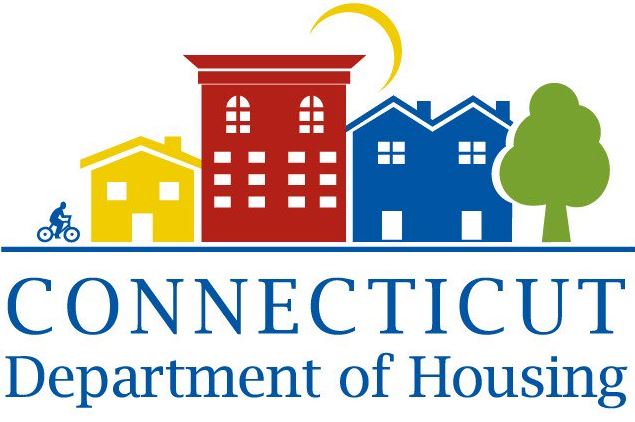Visit resilientconnecticut.uconn.edu
Project Summary
In June 2018, CIRCA was awarded a contract from the Connecticut Department of Housing (DOH) for administration of a grant from the US Department of Housing and Urban Development (HUD) National Disaster Resilience Competition (NDRC). UConn submitted a proposal to DOH in June 2017 for the project, Development of the Connecticut Connections Coastal Resilience Plan. The proposal was the second submitted as part of a two part NDRC competition, and the project is now titled Resilient Connecticut.
CIRCA, in coordination with state agencies, regional councils of governments (COGs) and municipalities, has initiated Resilient Connecticut, as part of Phase II of the HUD National Disaster Resilience Competition. Resilient Connecticut will provide the state with a regional and watershed focused Climate Adaptation Planning Framework piloted in the Superstorm Sandy impacted regions of New Haven and Fairfield Counties. The project will generate recommendations for a Statewide Resilience Roadmap that includes regional resilience and adaptation planning, policy consideration, and actionable priorities. In addition, science‐based regional risk assessments will inform municipal to regional scale initiatives and pilot projects. Resilient Connecticut’s guiding principle is to establish resilient coastal communities through smart planning that incorporates economic development framed around resilient transit-oriented development, conservation strategies, and critical infrastructure improvements.
Resilient Connecticut Vision
The vision for the project is to create a regional coastal resilience plan for Fairfield and New Haven Counties to establish resilient coastal communities where: structures and critical infrastructure in the flood zone are adapted to withstand occasional flooding and protected by healthy buffering ecosystems; critical services, infrastructure and transport hubs are located on safer, higher ground; and strong connections exist between the two. Increasing investment in identified "resilience zones" provides an opportunity to increase economic resilience by strongly tying back to the regional transportation network and regional economic opportunities.
Goals and Objectives
Resilient Connecticut has several overarching objectives to achieve this vision:
- Increase coordination and collaboration between state and local governments, Councils of Governments, NGOs, utilities, business communities, and residents to integrate climate adaptation strategies across political boundaries and leverage cross jurisdictional investments.
- Develop plans for New Haven and Fairfield Counties that will guide adaptation strategies and projects going forward; learning from and building on previous and ongoing adaptation planning efforts to create a planning framework that moves Connecticut beyond business as usual.
- Leverage CIRCA and UConn technical support and research on key questions related to climate adaptation - develop and demonstrate new modeling approaches and create tools and data that will support planning in Connecticut and beyond.
- Provide recommendations for a Connecticut Statewide Resilience Roadmap to help advance the capacity of a broad multidisciplinary community of practice in Connecticut. The following topics will be emphasized: state and local policy; resilient transit oriented economic development; innovative planning, design, and engineering approaches; science and research; communication and engagement.
Schedule and Scope
Resilient Connecticut will have 3 main phases beginning in Fall 2018 and running until Spring of 2022.

Phase I of the project (Fall 2018 to Fall 2019) includes a comprehensive inventory and assessment of previous and ongoing resilience and adaptation efforts both here in Connecticut as well as around the country and internationally. This research, along with consultation from the State Agencies Fostering Resilience (SAFR) and extensive stakeholder engagement, will inform the development of a Resilience Planning Framework. We anticipate the Framework will involve work at neighborhood, town, and regional scales and that it will consider the vulnerability of all infrastructure systems with the goal of the development of multi-scale strategies for resilience.
Phase II of the project (Fall 2019 to Fall 2020) will include of combination of regional and municipal scale planning activities as well as regional engagement and coordination across planning initiatives. During the Phase II process, a suite of projects with regional impact and significance will be identified and prioritized for site plan development in Phase III.
Phase III (Winter 2021 to Spring 2022) of the project will include site and implementation plan development, funding strategies, and a synthesis report that will document all project activities along with recommendations for a Connecticut Statewide Resilience Roadmap.
The Resilient Connecticut project will run through May 2022 and will extend activities from an initial 2016 award from HUD to implement pilot projects in Bridgeport. This 2016 award led to a vulnerability assessment that includes maps of flood risk and social vulnerability and a conceptual resilience framework for the Connecticut coast. More on these products can be found HERE. In addition to the recent $8 million award to UConn CIRCA, additional funding will go to continue the pilot projects in Bridgeport.
In their announcement of this award, HUD highlighted the priority to “extend the existing planning effort to more communities in New Haven and Fairfield Counties with the goal of providing accessible down-scaled inland and coastal flooding information at the watershed scale for inland and coastal municipalities.” When referring to the C3RP specifically, HUD said the award would “support the State’s efforts to bring these approaches to other at-risk communities along the I-95 corridor by contributing to planning efforts, including economic and climate modeling.”
UConn Project Team
- James O'Donnell, UConn Marine Sciences, UConn CIRCA
- Alex Felson - UConn CIRCA
- John Truscinski – UConn CIRCA
- Katie Lund, UConn CIRCA
- Yaprak Onat, UConn CIRCA
- Caterina Massidda, UConn CIRCA
- Todd Fake, UConn Marine Sciences, UConn CIRCA
- Kay Howard-Strobel, UConn Marine Sciences
- Kara Bonsack, UConn CLEAR


